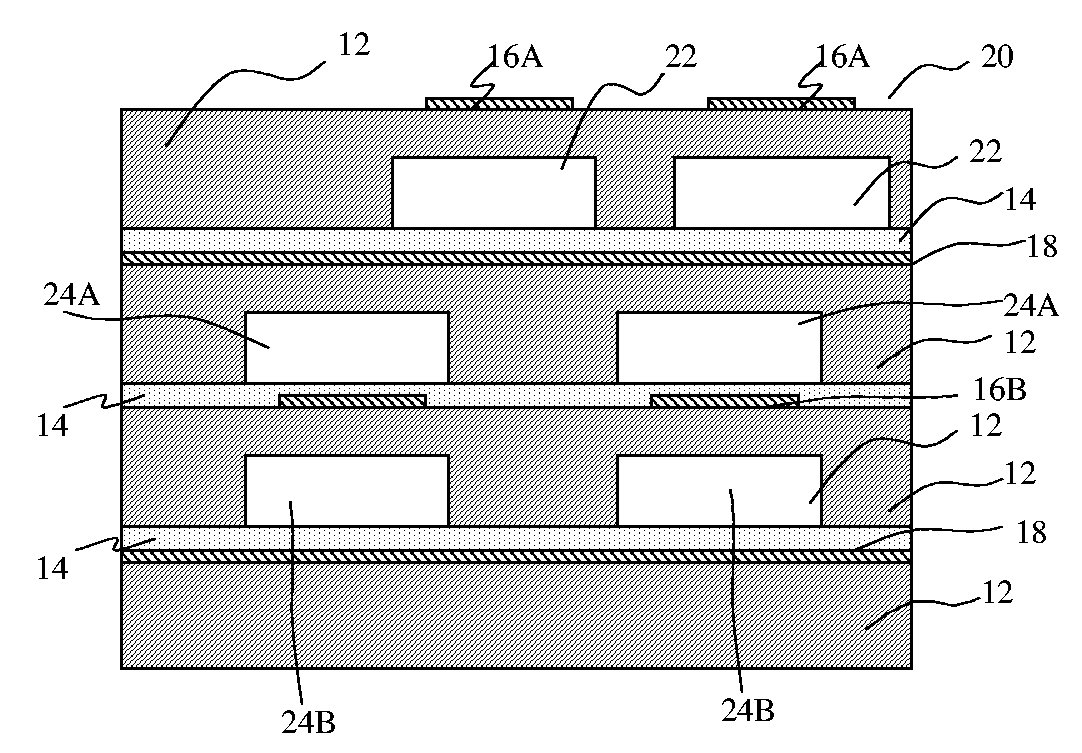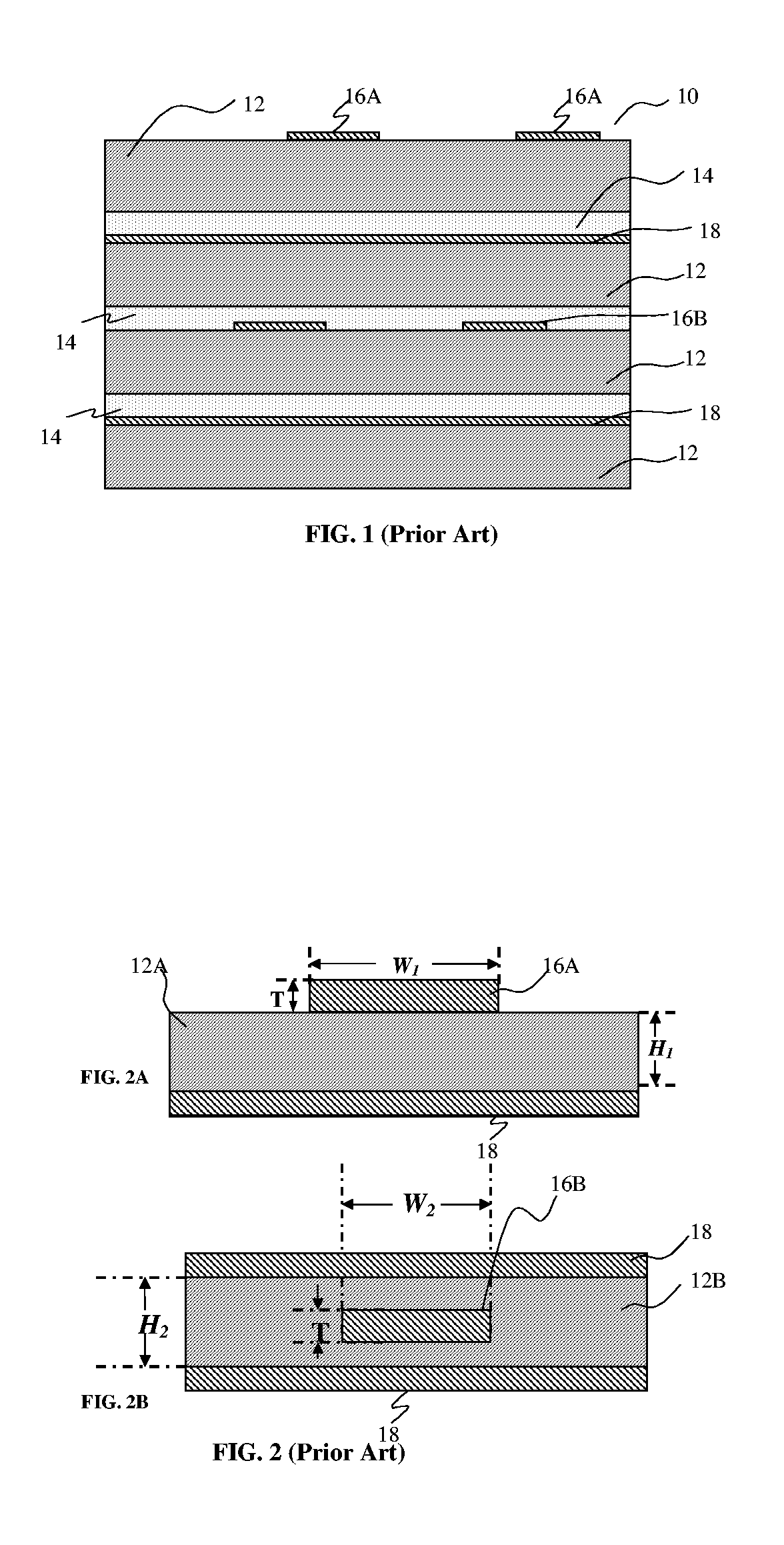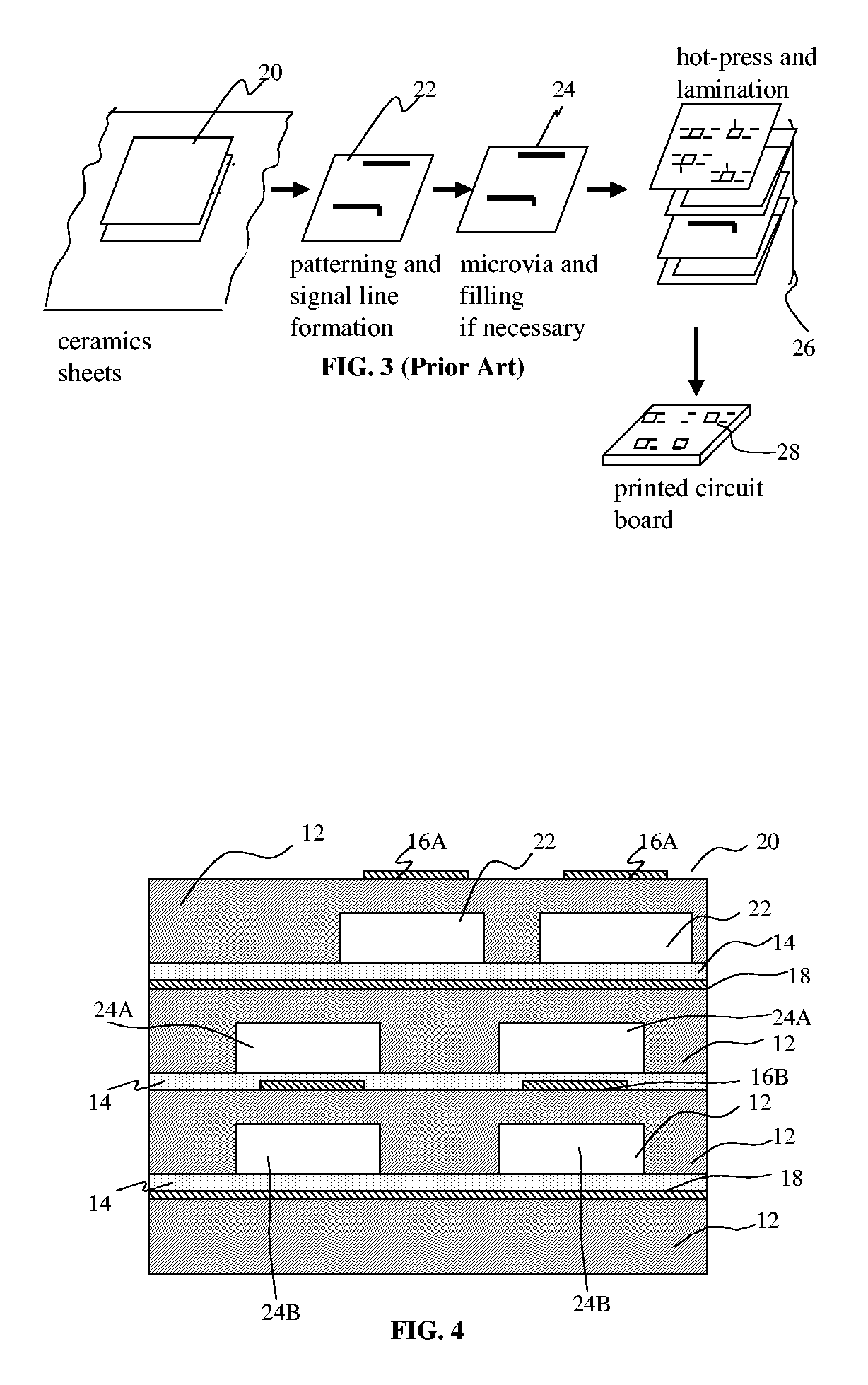High-Speed Printed Circuit Boards (PCBs) and Manufacturing
a printed circuit board and high-speed technology, applied in the direction of waveguides, high-frequency circuit adaptations, waveguide type devices, etc., can solve the problems of increasing the difficulty of high-density interconnects, so as to reduce the effective dielectric constant and effective dielectric loss, increase the bandwidth of interconnections, the effect of increasing the bandwidth
- Summary
- Abstract
- Description
- Claims
- Application Information
AI Technical Summary
Benefits of technology
Problems solved by technology
Method used
Image
Examples
first embodiment
[0053] An important point of high speed PCB having high speed electrical interconnects is that the microwave loss is to be reduced by reducing the effective tangent loss, resulting in increasing the bandwidth of the interconnects and keeping the signal-speed of the interconnection system closer to the source speed. Other point is also kept in mind that the technique is to be cost effective, and compatible to standard manufacturing technology can be used.
[0054] In interconnects system for two or more electronics elements (two or more chips etc.) Connections, the signal can be conveyed electrically through the wire (electrical conductor) laid on the dielectric medium. For high speed signal transmission electrical conductor is to be transmission line of type microstrip or strip line. The signal speed in the interconnects (i.e. bandwidth of the interconnects system) is mainly dominated by; (a) signal conductor parameters (i) length and (ii) thickness, and (b) dielectric material proper...
fifth embodiment
[0077]FIG. 8 shows the flow-chart of the high speed mulitlayered PCB fabrication process for the off-chip interconnects in the fifth embodiment in accordance to the invention, where in the like parts are indicated by the like numerals, so that repeated explanation is omitted here. The dielectric sheet (not shown) is made using the standard PCB technology for example using the slurry casting process. The slurry is cast into about 200 μm to 500 μm thick ceramic sheets by slip cast process. Each dielectrics sheet material 44 is the conventional PCB core layer 44. Metallization sheet 46 is made using the conventional PCB technology. After the metallization, the trench or slot is opened in sheet 48 by using the processes such as laser drilling, or dry-etching or wet-etching (following patterning for etching) or mechanical drilling. Via holes are formed through the dielectric sheet 44 by a punching machine with punches and dies. A ceramic sheet 44 may have more than 10,000 via holes in a ...
seventh embodiment
[0080]FIGS. 10A and 10B show the schematic showing the enlarged top views of the signal line layout which is connecting to the via or microvia in the case of multi-layered high speed PCB with the high speed signal lines and micro-via embedded into the PCB, in the seventh embodiment in accordance to the invention, where in the like parts are indicated by the like numerals, so that repeated explanation is omitted here. According to this invention, signal lines consisting of signal lines 58 and 60 (located on the surface 62) may have / haven't have transition. The transition of the signal lines 58 with underneath air-cavities (opened trenches) 24 (24A and 24B) to the signal lines 60 without air-cavities (opened trenches) prior to the via 54. For smooth transition without reflection of the signal, the transition length l3 is used. The shape of the transition could be trapezoidal or circular or ellipsoidal (not shown).
PUM
 Login to View More
Login to View More Abstract
Description
Claims
Application Information
 Login to View More
Login to View More - R&D
- Intellectual Property
- Life Sciences
- Materials
- Tech Scout
- Unparalleled Data Quality
- Higher Quality Content
- 60% Fewer Hallucinations
Browse by: Latest US Patents, China's latest patents, Technical Efficacy Thesaurus, Application Domain, Technology Topic, Popular Technical Reports.
© 2025 PatSnap. All rights reserved.Legal|Privacy policy|Modern Slavery Act Transparency Statement|Sitemap|About US| Contact US: help@patsnap.com



